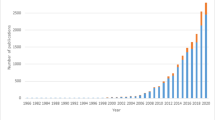Abstract
Belief in the healing power of prayer is found in various religious traditions. Spiritually grounded clinical interventions, such as intercessory prayer (IP), need to be understood in a broader sense. This essay features the IP trials, observing the controversial relationship between inconsistent results and allegedly inadequate methods and theoretical hypothesis. A survey of the literature was conducted including publications indexed until September 2013, focusing on the trials developed in the field and on the critics about the methodological design. Recent meta-analyses and multicenter studies found inconclusive results in the investigation of IP. Clinical trials on IP present some methodological difficulties: The intervention is not fully controlled; the primary outcome is not properly defined; and the theoretical models seem inconsistent. The “non-local consciousness” model may be appropriate for studies of IP. Directions for future research: greater emphasis on the evaluation of the effectiveness of this intervention in animal models; selection of subjects and healers who have previous connection; considering the hypothesis of non-local consciousness in the study design.
Similar content being viewed by others
References
Achterberg, J., Cooke, K., Richards, T., Standish, L. J., Kosak, L., & Lake, J. (2005). Evidence for correlations between distant intentionality and brain function in recipients: A functional magnetic resonance imaging analysis. Journal of Alternative & Complementary Medicine, 11(6), 965–971.
Almeida, A. M., & Lotufo Neto, F. (2003). Diretrizes metodológicas para investigar estados alterados de consciência e experiências anômalas. Revista de Psiquiatria Clínica, 30(1), 21–28.
Andrade, C., & Radhakrishnan, R. (2009). Prayer and healing: A medical and scientific perspective on randomized controlled trials. Indian Journal of Psychiatry, 51(4), 247–253.
Benson, H., Dusek, J. A., Sherwood, J. B., Lam, P., Bethea, C. F., & Carpenter, W. (2006). Study of the Therapeutic effects of intercessory prayer (STEP) in cardiac bypass patients: A multicenter randomized trial of uncertainty and certainty of receiving intercessory prayer. American Heart Journal, 151(4), 934–942.
Byrd, R. C. (1988). Positive therapeutic effects of intercessory prayer in a coronary care unit population. Southern Medical Journal, 81(7), 826–827.
Chibeni, S. S., & Moreira-Almeida, A. (2007). Investigando o desconhecido: Filosofia da ciência e investigação de fenômenos “anômalos” na psiquiatria. Revista de Psiquiatria Clínica, 34(supl 1), 8–16.
Flannelly, K. J., Koenig, H. G., Ellison, C. G., Galek, K., & Krause, N. (2006). Belief in life after death and mental health: Findings from a national survey. The Journal of Nervous and Mental Disease, 194, 524–529.
Grinberg-Zylberbaum, J., Delaflor, M., Attie, L., & Goswami, A. (1994). The Einstein/Podolsky/Rosen paradox in the brain: The transferred potential. Physics Essays, 7(4), 422–428.
Guimarães, H. P., & Avezum, A. (2007). O impacto da espiritualidade na saúde física. Revista de Psiquiatria Clínica, 34(supl 1), 88–94.
Harris, W. S., Gowda, M., Kolb, J. W., Strychacz, C. P., Vacek, J. L., & Jones, P. G. (1999). A randomized, controlled trial of the effects of remote intercessory prayer on outcomes in patients admitted to the coronary care unit. Archives of Internal Medicine, 159, 2273–2278.
Koenig, H. G., King, D. E., & Carson, B. E. (2010). Handbook of religion and health (2nd ed.). New York: Oxford University Press.
Koenig, H. G., McCullough, M., & Larson, D. B. B. (2001). Handbook of religion and health: A century of research reviewed. New York: Oxford University Press.
Kuhn, T. S. (2000). A estrutura das revoluções científicas. São Paulo: Editora Perspectiva.
Levin, J. (2003). Spiritual determinants of health and healing: An epidemilogic perspective on salutogenic mechanisms. Alternative Therapies in Health and Medicine, 9(6), 48–57.
Levin, J. (2004). Deus, fé e saúde: Explorando a conexão espiritualidade-cura. São Paulo: Cultrix.
Moreira-Almeida, A. (2007). Espiritualidade e saúde: Passado e futuro de uma relação controversa e desafiadora. Editorial. Revista de Psiquiatria Clínica, 34(supl 1), 3–4.
Roberts, L., Ahmed, I., & Hall, S. (2007). Intercessory prayer for the alleviation of ill health. Cochrane Database Systematic Review, 24(1), DH000368.
Roberts, L., Ahmed, I., Hall, S., & Davison, A. (2009). Intercessory prayer for the alleviation of ill health. Cochrane Database Systematic Review, 15(2), DH000368.
Schiltz, M., & Braud, W. (1997). Distant intentionality and healing: Assessing the evidence. Alternative Therapies in Health and Medicine, 3(6), 62–73.
Schlitz, M., Radin, D., Malle, B. F., Schimidt, S., Utts, J., & Yount, G. L. (2003). Distant healing intention: Definitions and evolving guidelines for laboratory studies. Alternative Therapies in Health and Medicine, 9(3), A31.
Schwartz, S., & Dossey, L. (2010). Non-locality, intention, and observer effects in healing studies: Laying a foundation for the future. Explore, 6(5), 295–307.
Sloan, R. P., & Ramakrishnan, R. (2006). Science, medicine, and intercessory prayer. Perspectives in Biology and Medicine, 49(4), 504–514.
Standish, L. J., Johnson, C., Kozak, L., & Richards, T. (2003). Evidence of correlates functional magnetic resonance imaging signals between distant human brains. Alternative Therapies in Health and Medicine, 9(1), 122–128.
Tressoldi, P. E. (2011). Extraordinary claims require extraordinary evidence: The case of non-local perception, a classical and Bayesian review of evidences. Front Psychol, 2, 117.
Turner, D. D. (2006). Just another drug? A philosophical assessment of randomised controlled studies on intercessory prayer. Journal of Medical Ethics, 32(8), 487–490.
World Values Survey. (2011). http://www.wvsevsdb.com/wvs/WVSAnalizeQuestion.jsp. Accessed 24 Aug 2011.
Author information
Authors and Affiliations
Corresponding author
Rights and permissions
About this article
Cite this article
de Aguiar, P.R.D.C., Tatton-Ramos, T.P. & Alminhana, L.O. Research on Intercessory Prayer: Theoretical and Methodological Considerations. J Relig Health 56, 1930–1936 (2017). https://doi.org/10.1007/s10943-015-0172-9
Published:
Issue Date:
DOI: https://doi.org/10.1007/s10943-015-0172-9




